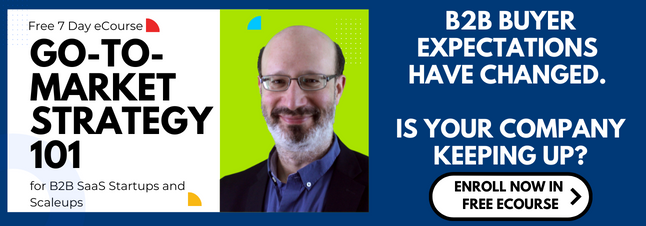A while back, a prospect reached out to me looking for customer acquisition help to attract consultancy clients.
He was looking for a two-to-four-week paid trial engagement to see if someone could close one deal. If successful, he’d be open to a long-term engagement.
In this blog post, you’ll learn how to figure out if a prospect’s customer acquisition strategy is fully-baked and ready to scale --- or if their customer acquisition system needs to go back to the drawing board.
The Customer Acquisition Funnel Project from the Delusional Prospect

This prospect described a series of responsibilities, including:
- Developing and scaling new customer acquisition channels
- Creating, implementing, and optimizing innovative marketing campaigns
- Measuring results
- Scaling what’s worked
- Getting the right content and messaging in front of the target audiences
- Building a book of business for high-ticket consulting clients ($1,000+/hour with a minimum $50,000 contract)
- Focusing on institutional investors -- specifically private equity and venture capital firms
- Executing customer acquisition funnels that support branding and ethics guidelines
- Collaborating with the CEO on late-stage sales opportunities
- Applying non-traditional growth strategies
The message read like a request for proposal (RFP) for a well-established consulting firm.
However, when I dug a little deeper as part of my due diligence, I learned that that firm was a sole proprietor, a part-time virtual assistant, and a few ad-hoc project-based consultants.
My take: The request's tone was wildly overconfident and delusional.
So I responded with four questions:
How to Determine If a Customer Acquisition Strategy is Ready to Scale
First, I let this prospect know that I
- Looked at his firm’s website, social media presence, and detailed description
- Knew this target audience that he wanted to pursue pretty well -- which made me immediately ask why he thought the two-to-four-week paid trial engagement (or what he called a “sprint” period) was even a remotely realistic time frame

I also wanted answers to these four prerequisite questions:
- Does your firm already have product/market fit (PMF)? In other words, do you know exactly who your target customers are, what services they purchase, at what price points, and how often?
- How many documented case studies do you have for these types of target customers who’ve purchased at the current price points and seen initial, intended, and extended value from their consulting engagements?
- Do you have a documented sales process and playbook?
- How many nurtured leads in your CRM know, like, and trust your firm? How many warm opportunities are currently on your CRM deals board waiting for additional outreach?
Summing Up the Customer Acquisition Process and Fishing Expedition
My initial reaction was that this prospect was setting someone up for inevitable failure and that there was a great deal of putting the cart before the horse.

You just can’t turn on a customer acquisition funnel if you haven’t taken the time to figure out your go-to-market strategy, especially buyer personas, journey maps, and ideal client profile.
Ten years ago, you may hack together a customer acquisition strategy that just “wings it” on aggressive cold outreach with very little content.

However, in a world where 83% of most buyer’s journeys -- researching, comparing options, and evaluating pricing -- happen before B2B buyers engage with a vendor (Gartner), your customer acquisition process needs to confront present realities -- not delusionally try to sell like it’s still the early 2000’s.
What else do you ask prospects to size up their customer acquisition funnel strategy? Let me know in the comments section down below.
enroll now in our free 7-day eCourse: Go-to-Market Strategy 101 for B2B SaaS Startups and Scaleups.


